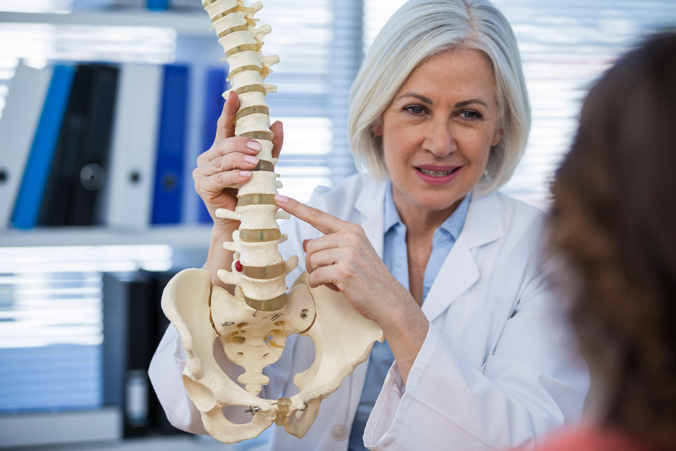Denosumab superior to risedronate for spine, hip BMD through 2 years
Click Here to Manage Email Alerts

CHICAGO — Denosumab was superior to risedronate for increasing spine and hip bone mineral density, with both treatments demonstrating similar safety, among patients receiving glucocorticoids, according to Kenneth Saag, MD, MSc, University of Alabama at Birmingham.
“Glucocorticoid-induced osteoporosis remains the most common secondary cause of osteoporosis, and is very relevant to us in rheumatology since we still prescribe a lot of glucocorticoids,” Saag said, addressing attendees at the ACR/ARHP 2018 Annual Meeting. “Despite approved therapies, many patients are not receiving prevention or treatment for this condition. We know that the complex path of physiology of this is partially characterized by increased RANK ligand and decreased osteoprotegerin expression. Denosumab is a monoclonal antibody to RANK ligand approved for men and women with osteoporosis at high risk for fracture.”
To compare the effects of denosumab (Prolia, Amgen) and risedronate on bone mineral density among patients treated with glucocorticoids, and to evaluate the safety of denosumab among this population, at 24 months, Saag and colleagues conducted a phase 3, randomized, double-blind, double-dummy study of 795 adults. All participants were receiving 7.5 mg or more of prednisone daily — or equivalent — for either less than 3 months, if they were part of the study’s glucocorticoid-initiating subpopulation, or 3 or more months, if they were part of the glucocorticoid-continuing subpopulation.

All participants younger than 50 years had a history of osteoporotic fracture. All patients aged 50 or older had a lumbar spine, total hip or femoral neck bone mineral density T-score –2 or less, or –1 or less with a history of fracture. Participants were evenly randomized to receive either denosumab 60 mg subcutaneously every 6 months or risedronate 5 mg orally each day for 24 months.
A total of 590 patients completed the 2-year study. Among the glucocorticoid-initiating subpopulation, 109 patients treated with denosumab and 117 of those receiving risedronate completed the study. In the glucocorticoid-continuing group, 186 treated with denosumab and 178 receiving risedronate completed.
According to Saag, denosumab was superior to risedronate for increases in lumber spine and total hip bone mineral density from baseline at all timepoints assessed through 24 months in both subpopulations. Adverse events, serious adverse events — including infection — and fractures were similar between groups.
“Treatment differences at all skeletal sites were larger at 24 months than at 12 months,” Saag said. “Denosumab may offer a useful osteoporosis treatment option for patients receiving glucocorticoids.” – by Jason Laday
Disclosure: Saag reports research grants from Amgen, Mereo and Radius, as well as consulting fees from Amgen, Radius and Roche.
Reference :
Saag K. Abstract 1818. Presented at ACR/ARHP Annual Meeting, Oct. 20-24, 2018; Chicago.

